86 Billions: What is the experience of a neuron inside your brain?
There are 86 billion neurons in the human brain. The art, science, the greatest creations and discoveries in this world that our species holds so much pride in, are all created inside this ‘space’—the brain, at some time.
Neurons work ceaselessly in this ‘space’ to allow everything to happen. What if we think of neurons as ‘tiny lifeforms’ living inside our brains? For every one of us, there is a universe of them. Does the brain become a house, a factory…or perhaps an entire new universe for them?
The Exhibited Virtual Installation (during COVID-19)
Entering the virtual gallery: The installation is placed in the center of the virtual gallery. It is surrounded by my 2D works on the walls. They are reflected on the installation’s mirrored outer-surface. Reflection plays a big part in the installation, here it is used to create illusions of space.
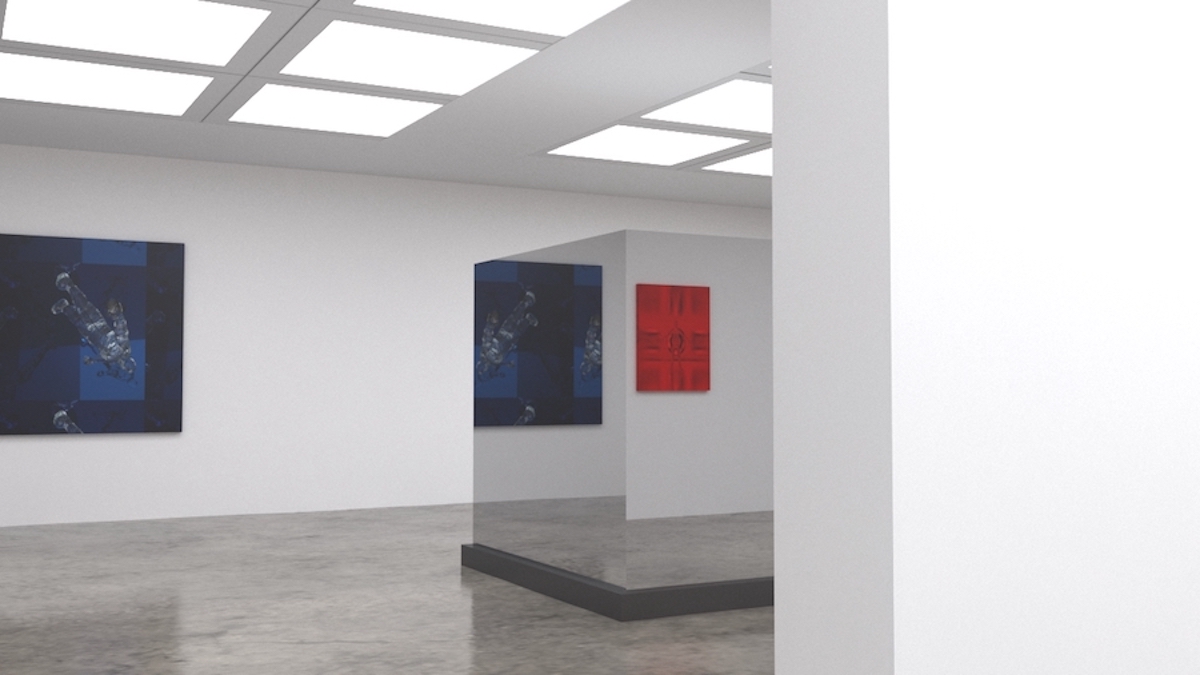
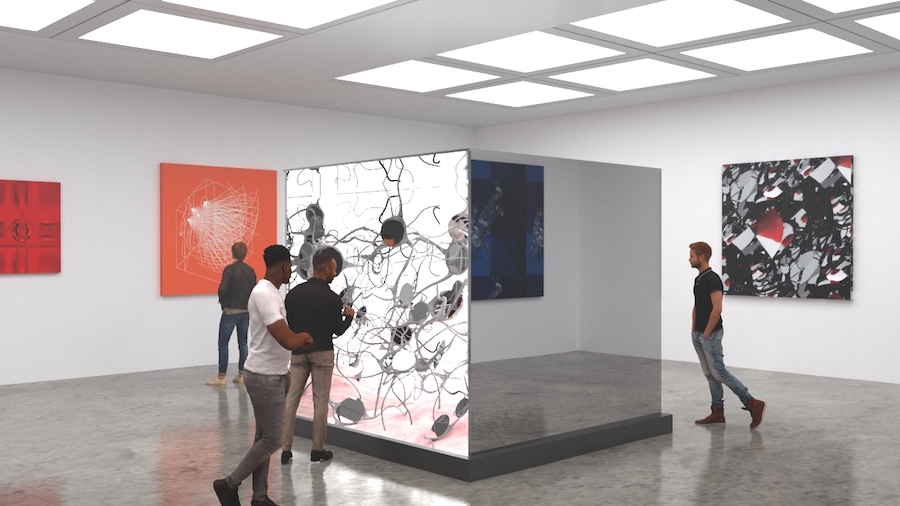
Viewing experience: A viewer stands at the opening of the cube. At the right position, the viewer will see infinities of their face reflected on the mirrors inside the cube, as if they are interacting with the 86 billion neurons living inside their brain.
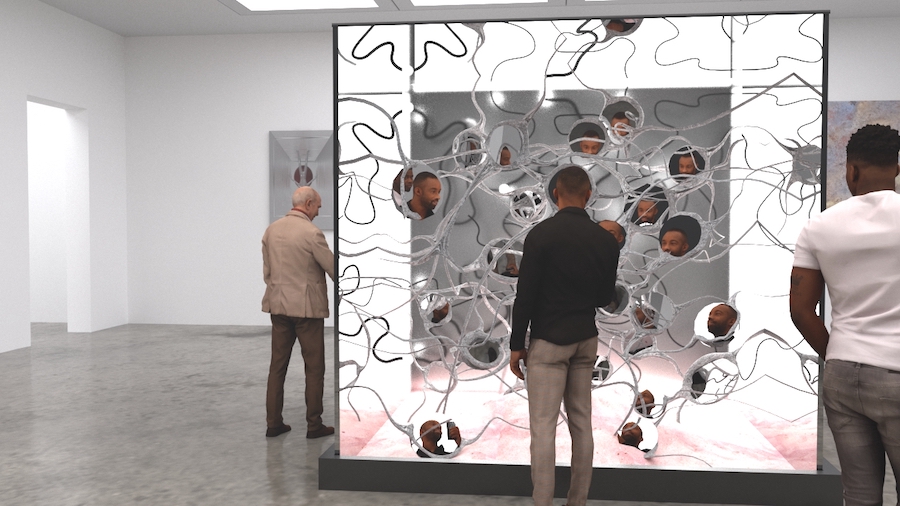
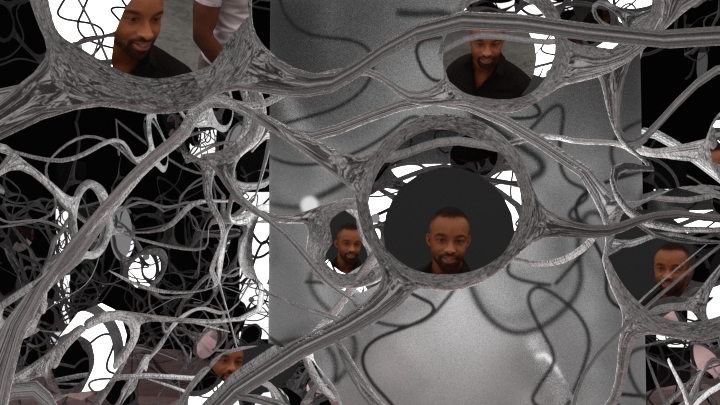
Through the many neurons occupying the cubed space, at the back of the cube, there is an additional layer of frosted glass. This semi-transparent surface vaguely shows structures of more “neuron branches” and lights flowing through, representing the action potentials in the neurons.
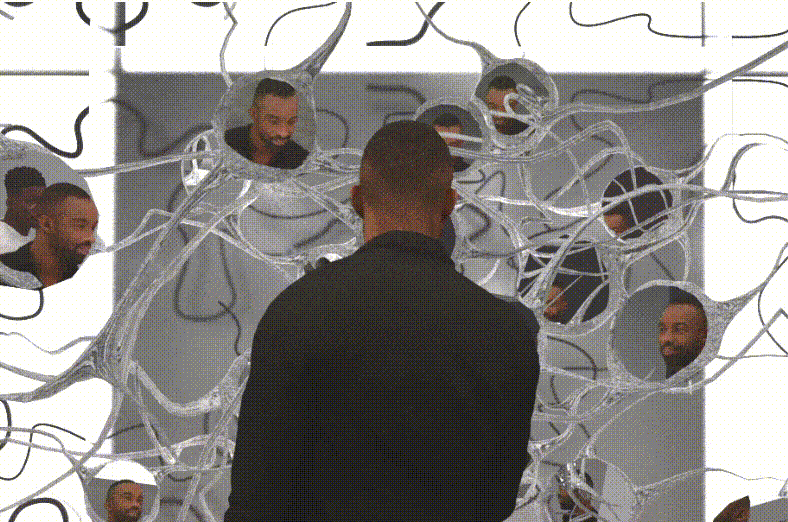
While the fictional “one’s own universe of neurons” space (illusional infinity in the finite cubed space) is for one viewer at a time, others would have a different viewing experience at this time, touring the gallery.
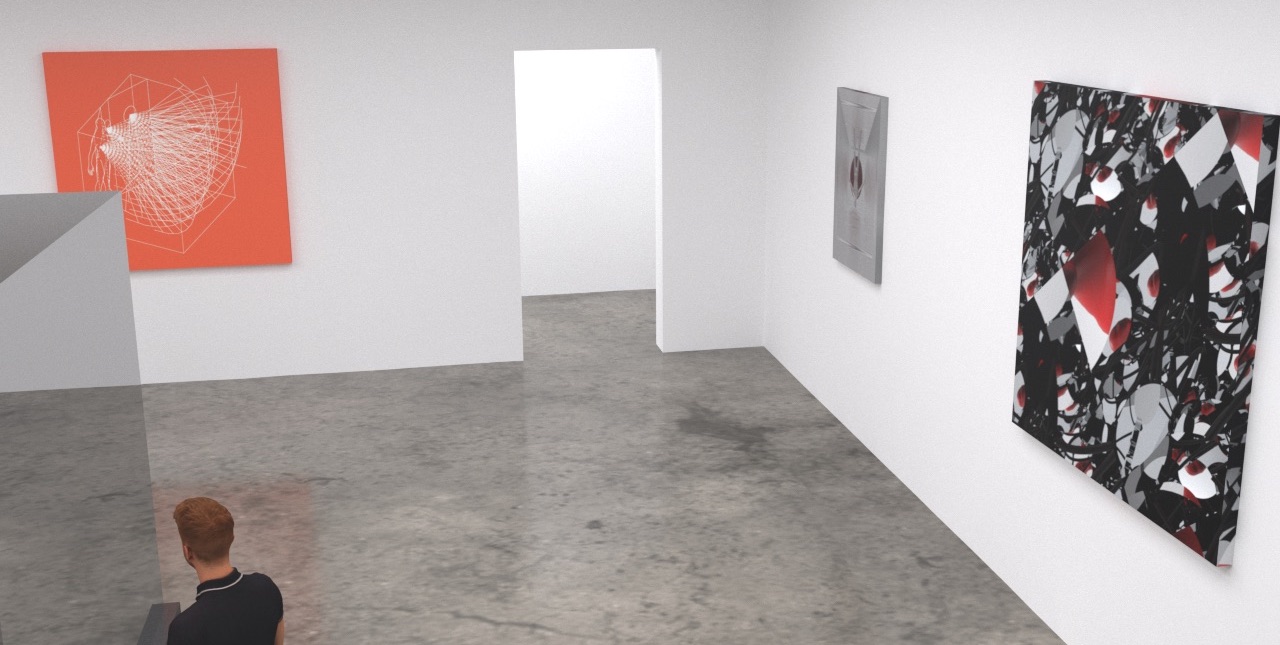
Messy process thoughts
“We all, children and grownups alike, are inclined to live in our own little world, in our immediate surroundings, or at any rate with our attention concentrated on those things with which we are directly in touch. We tend to forget how vast are the ranges of existing reality which our eyes cannot directly see, and our attitudes may become narrow and provincial. We need to develop a wider outlook, to see ourselves in our relative position in the great and mysterious universe in which we have been born and live.”
Part 1: What is the exprience like inside an enclosed mirrored sphere?
This is one of my earliest installation proposals. This proposal would make use of an EEG device, electroactive polymer materials (EAP), and a one-way mirror (manufactured to be spherical).
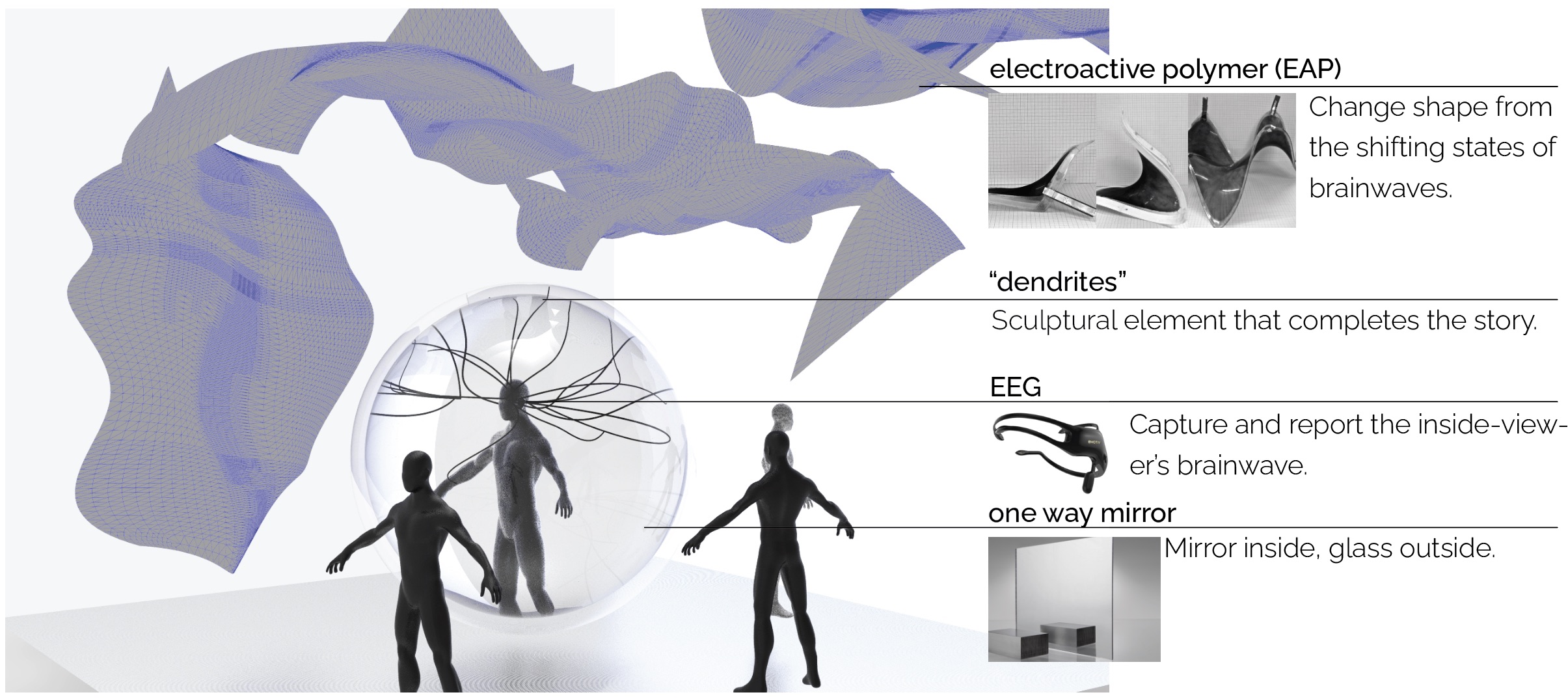
A single viewer steps into the one-way mirrored sphere. Its inside is mirrored, the viewer is completely isolated from the outside world, but accompanied by many distortions of themselves.Is this the experience inside their brain?
They wear a EEG device connected by “dendrites” sculptures. Their brainwaves are process to morph electro-active polymer (EAP) sculptures outside the sphere. Outside viewers see the EAP “sculptures” constantly changing shapes as the inside viewer’s thought goes on. They can also observe the inside viewer from the see through-glass outside surface of the sphere.
For the outside viewers, are they in the inside viewer’s “brain (as a) space”? Does the space of the room become a representation of inside viewer’s brain? For them, does the inside viewer become the owner of this “universe”, or just a single neuron connected?
To investigate the unusual yet mysterious experience inside an enclosed mirrored sphere, I rendered a 3D model to virtually experience this imagined encounter:
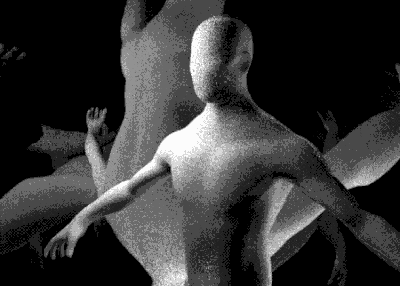
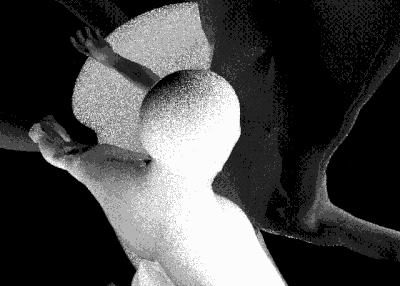
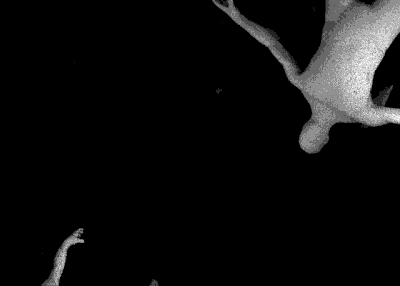
Seen in the virtual mock-up, there would be:
01 - Isolation of the Self:
Being inside a mirrored sphere cuts the person off from the outside world. The mirrored sphere becomes a space of isolation.
02 - Instances of the Self:
The person would also see many reflections of themselves around them -duplications of self.
03 - Distortion of the Self:
The reflections the person sees at different angles are distorted and varies from one another. Granted this abstraction, my wild art brain says: I’d like to think of these reflections as other neurons, and the person becoming a single neuron in this imagined space of the brain. This is the embodiement of imagining neurons as small lifeforms living inside the person’s brain (as a space). Here the person steps into the mirrored sphere to witness the “space” of their brain from a neuron’s perspective.

From interviewing a bioinformationist on campus, I gained access to EEG datasets and were introduced to some opensource EEG analysis and visualization resources.

At around the same time, I encountered a book at the library: Portraits of the Mind by Carl Schoonover. It is a fascinating collection of images produced by brain-imaging techniques throughout history, from the earliest hand-drawn neurons to awing present-day brain visualizations such as “brainbow”.
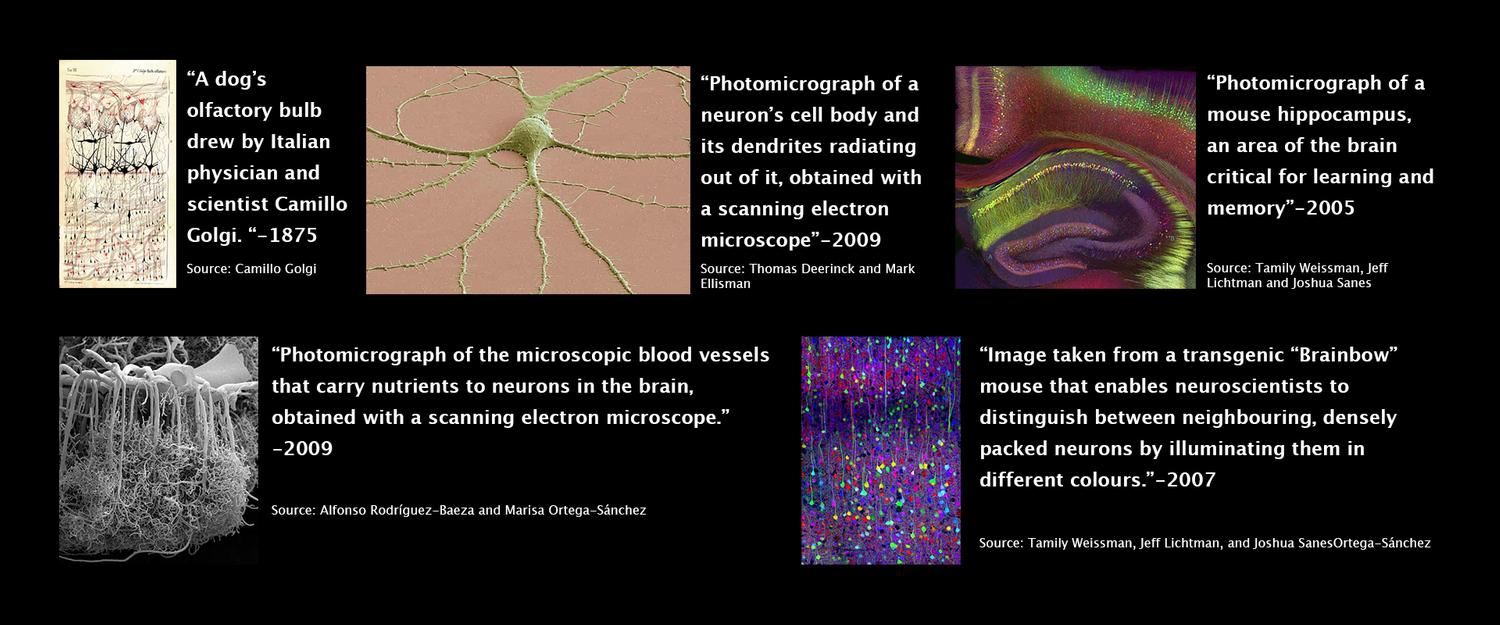
“For an Apple is in itself a little Universe; the Seed, hotter than the other parts thereof, is its Sun, which diffuses about itself that natural Heat which preserves its Globe: And in the Onion, the Germ is the little Sun of that little World, which vivifies and nourishes the vegetative Salt of that little mass.”
Part 2: Dendrites: Fractals and “Cosmological Aesthetics”
I started to find great similarities between neurons and tree branches, and even the cosmos. Why does nature create this similar branching structure in such different scales? Though at first not understanding the fundamental idea behind, I started to document tree branches with this idea in mind. Perhaps I could also imagine the brain as another natural landscape, I thought, a landscape of the mind, parallel to the landscape we live in.

Perhaps it is because they are both fractals -a realization I made after learning about fractals in a conversation with a math student here at University of Michigan.
I was amazed by how ubiquitous the existence of fractals is in this world, whether in nature, math, even in a hypothesis for the stock market and more.
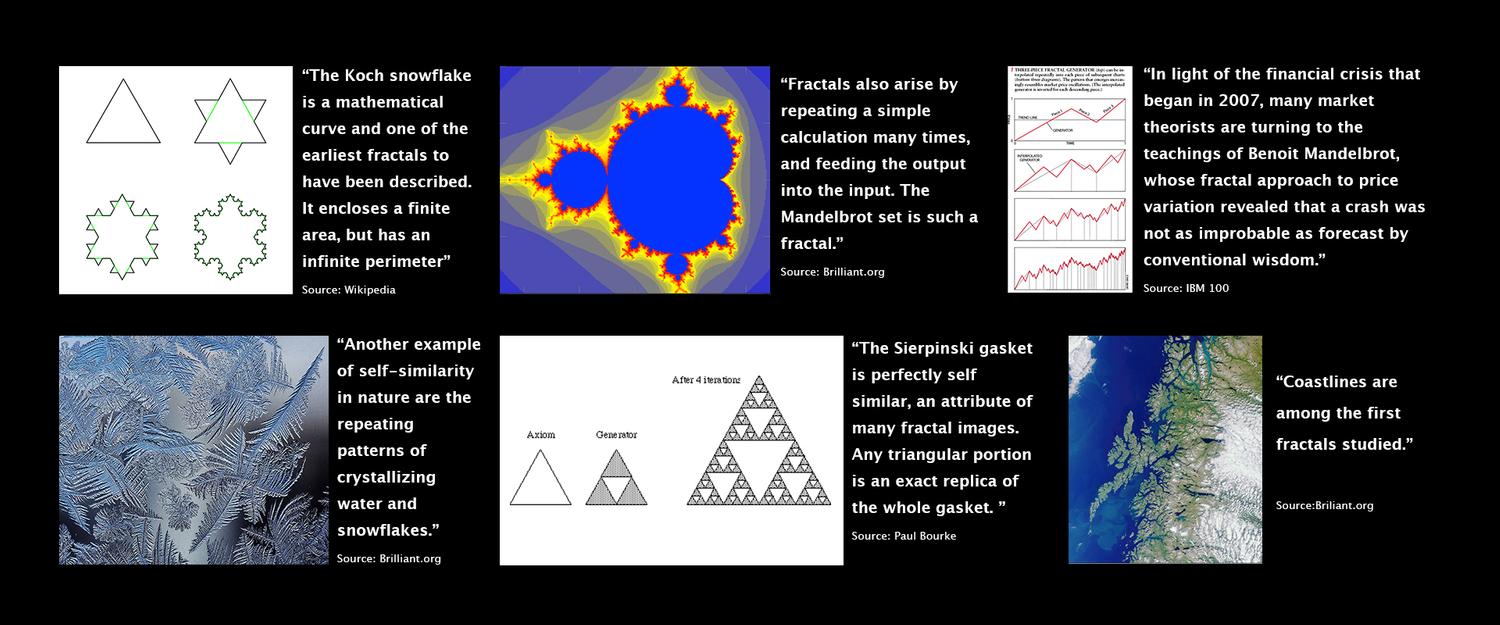
The Fractal Foundation says :“A fractal is a never-ending pattern. Fractals are infinitely complex patterns that are self-similar across different scales. They are created by repeating a simple process over and over in an ongoing feedback loop. Driven by recursion, fractals are images of dynamic systems – the pictures of Chaos. Geometrically, they exist in between our familiar dimensions. Fractal patterns are extremely familiar, since nature is full of fractals. For instance: trees, rivers, coastlines, mountains, clouds, seashells, hurricanes, etc. Abstract fractals – such as the Mandelbrot Set – can be generated by a computer calculating a simple equation over and over.”
With references from New York University’s Professor Daniel Shiffman’s book The Nature of Code, I learnt using Processing to create simple fractal trees.

At the around same time, I was looking at many immersive installations that employ the use of projection mapping and interactive projections.
With some research, I learnt that Touchdesigner and vvvv. are two great softwares to generate real-time graphics for real-time-projection-based installations. Touchdesigner provides a node-based system that I thought of as “visual programming”.
I followed a Touchdesigner tutorial and created a animated self-duplicating/branching network pattern.

Experimenting with projection, I simply felt like transitioning into creating an installation with more physical elements (e.g. physical sculptures).

“To give an object poetic space is to give it more space than it has objectivity; or better still; it is following the expansion of its intimate space. For the sake of homogeneity, I shall recall how Joë Bousquet expressed the intimate space of a tree: ‘Space is nowhere. Space is inside it like honey in a hive.’ In the realm of images, honey in a hive does not conform to the elementary dialectics of contained and container. Metaphorical honey will not be shut up, and here in the intimate space of a tree, honey is anything but a form of marrow. ..If the interior space of a tree is a form of honey, it gives the tree ‘expansion of infinite things’.”
Part 3: Mirrors, Infinity Spaces, Programmed Lights, and Neuron Sculptures
At this stage, I was experimenting with mirrors to create illusions of a virtual space in a physical space.

We were each given an around 9ft * 9ft * 9ft cubicle space for the exhibition. With the help of mirrors, I could create an infinite space inside the finite cube, and infinite instances of “neurons” (sculptures).
I decided to use mirrors on the neuron sculptures. One would see infinite reflections of themself, with dendrites extending from their reflections, connecting one reflection with another.

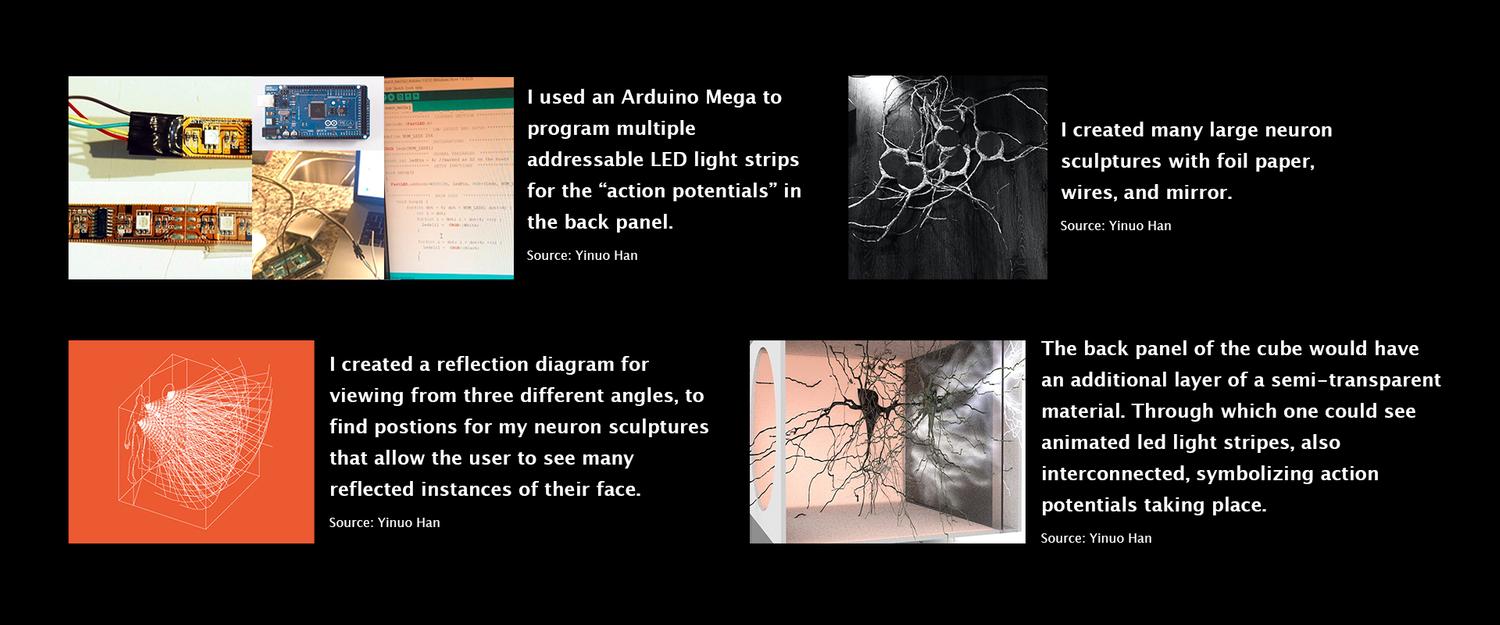

COVID-19 hit while I was preparing for the physial installation. I quickly moved it to the virtual land.